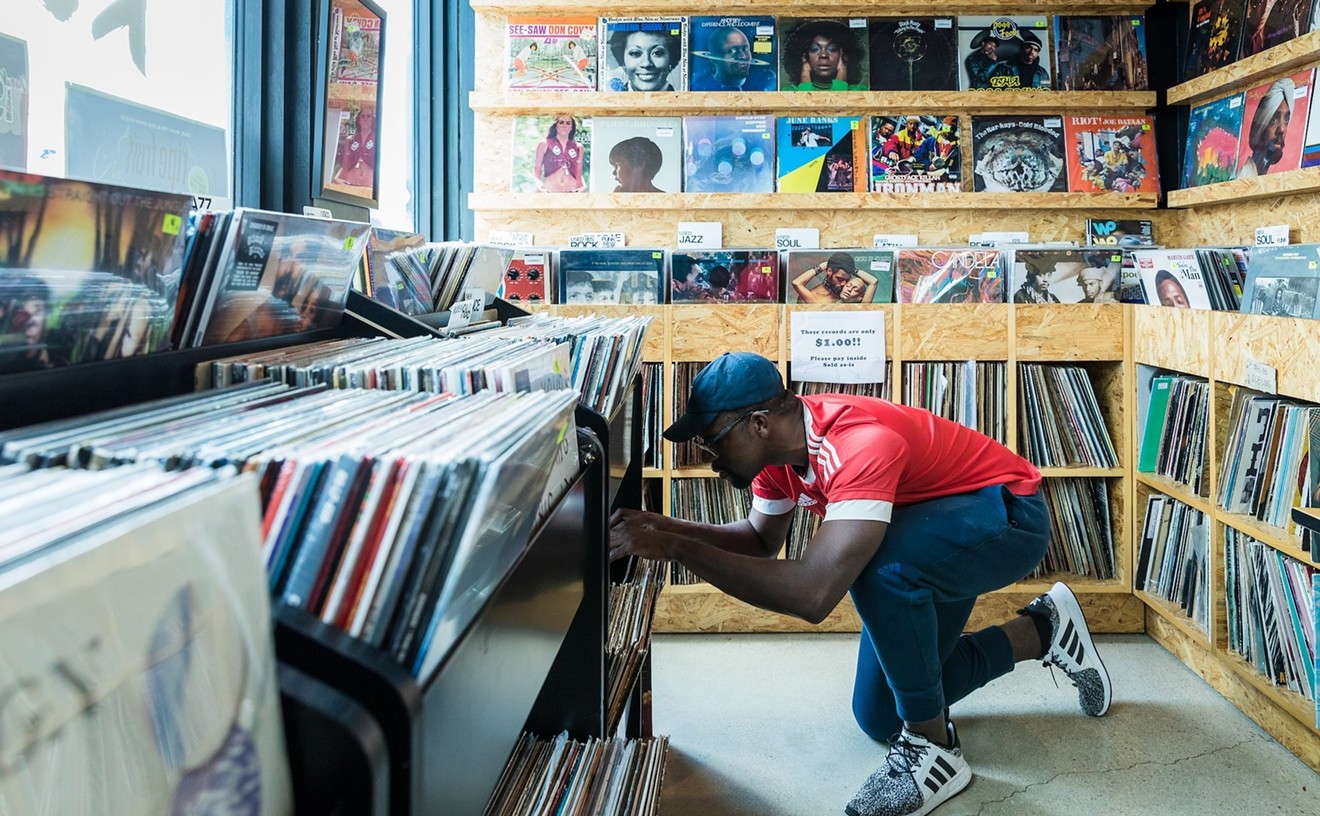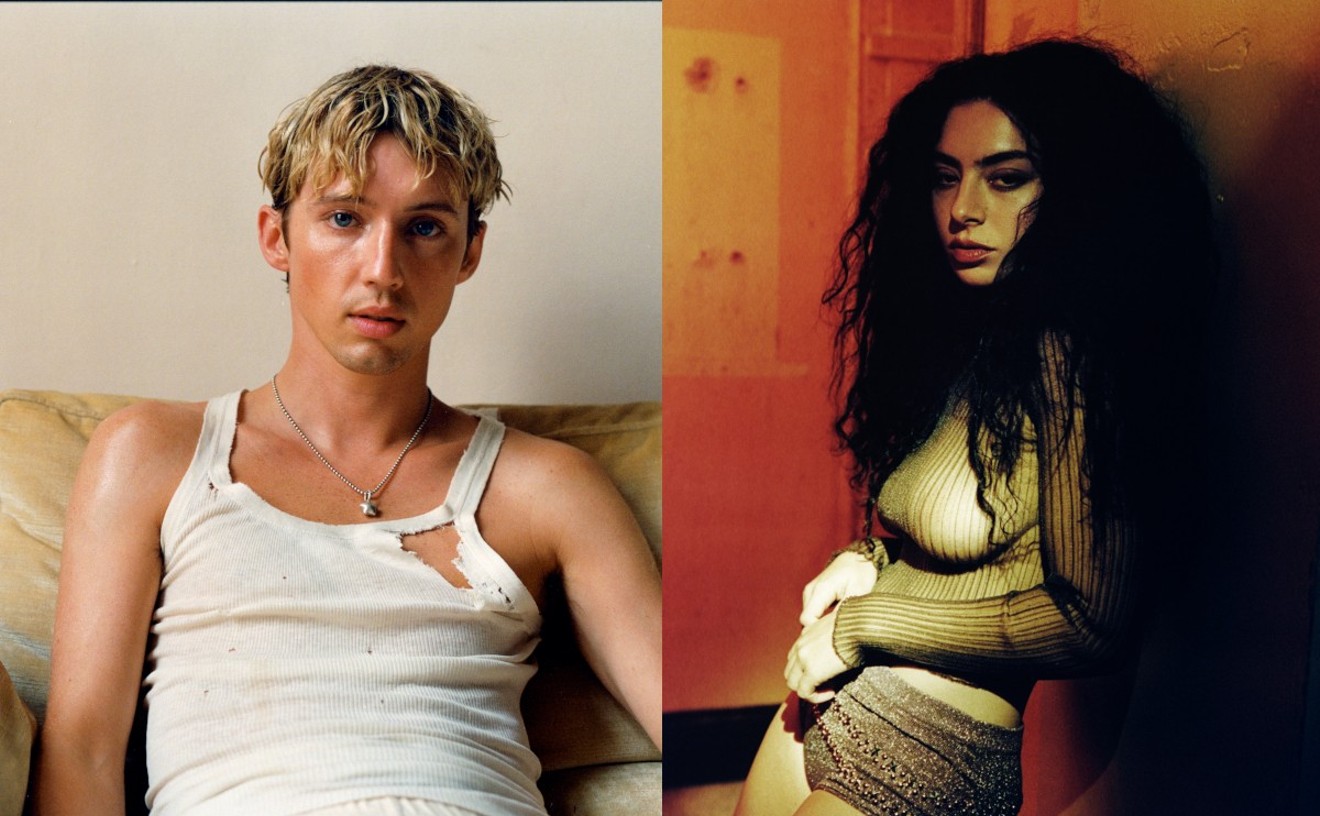That is somewhat baffling, because doo-wop has produced some of pop's most unruly classics: the Marcels' absolutely manic reconstruction of Rodgers and Hart's standard "Blue Moon"; the surreal saga in the Eternals' "Babalu's Wedding Day"; the Chips' nonsensical anthem, "Rubber Biscuit," which the Blues Brothers bowdlerized in the late '70s; the Rivingtons' self-explanatory "Papa-Oom-Mow-Mow"; the Devotions' hilarious retelling of the children's fable "Rip Van Winkle," complete with bowling alley sound effects and other hysterical studio trickery; the Marquees' lascivious "Hey Little Schoolgirl" -- the list is seemingly endless. And though most of the aforementioned songs were hits, the doo-wop well is bottomless and, as the four-volume import series Dangerous Doo-Wop attests, some of the genre's funniest, most frenzied, and finest moments were its most obscure (unless you grew up near a radio that blasted the Poets' "Vowels of Love" and the Ivy Tones' "Oo-Wee Baby" -- and I bet you didn't).
If, however, rhythmic and vocal madness were the only elements that defined the sound and style of doo-wop, you'd have redux doo-woppers hitting the same punk-paved revivalist trail as old-school rockabillies like Ronnie Dawson, Sonny Burgess, and Johnny Powers. At its best doo-wop was about the glory of romance and the tragedy of heartbreak, those moments of emotional bliss and those tormented, sleepless nights prompted by the crushing realities of loss. Within those thematic poles existed a world of sublimely beautiful, idyllic music -- ballads that featured soaring, often wrenching lead vocals; all manner of crooning, moaning, and chanting backup accompaniment; and lyrics that could be construed as insipid only by heartless souls, intellectual snobs, and art rockers.
The songs could be as sweet and gooey as the Danleers' "One Summer Night" or as disturbing and chilling as Nolan Strong's "The Wind." They could celebrate the intoxicating rush of young love à la the Capris' "There's a Moon Out Tonight" and the Tymes' "So Much in Love" or wallow in the kind of misery and despair that makes the Skyliners' "Since I Don't Have You" such a tough record to hear, whether or not you've actually suffered a fate similar to the one that befell vocalist Jimmy Beaumont. Even such aptly named kid combos as the Students and the Schoolboys could reduce you to tears (the former with "I'm So Young," the latter with "Please Say You Want Me"). The music, meanwhile, could work along the lines of the standard R&B ballads of the '50s or offer a startling glimpse of what would later evolve into soul music. More important, the mostly anonymous producers, arrangers, and studio musicians weren't afraid to experiment with different rhythms, most notably the Latin beats that propelled the greatest collaborations between the Drifters and their primary writers and producers, Jerry Leiber and Mike Stoller, who first heard that group while on vacation in Mexico. The earliest mambo-driven, R&B-soaked hits of the Drifters -- most notably "Such a Night" and "There Goes My Baby" -- inspired countless groups to fool around with infectious, exotic Latino rhythms. As a result doo-wop history is littered with lost gems and pop and R&B chart hits that celebrate this commingling of genres.
I've been thinking of this genre-mingling quite a bit lately, after spending the last few weeks with Los Zafiros' Bossa Cubana. Unless you're either a Cuban music fanatic or a world-music archaeologist with a very big shovel, you've probably never heard of Los Zafiros (the Sapphires). For the better part of the '60s, however, this Havana-based quintet managed to fuse the rhythms of their native land with the doo-wop stylings of such stateside combos as the Platters, among the most popular and urbane vocal groups of the era.
The results remain both thrilling and throttling 36 years after Los Zafiros made their recording debut with "La Caminadora," a wailer driven by some dizzying wah-wahs and the powerful, tongue-tying vocals of Eduardo Elio "El Chino" Hernández. The song is one of two here penned by Néstor Milí, a producer/arranger/writer sought out in 1962 by vocalists Leoncio "Kike" Morúa and Miguel "Miguelito" Cancio to help them assemble an ensemble -- Los Zafiros -- that would allow them to do something with their passion for U.S.-based doo-wop. After happening upon Ignacio Elejalde -- in a barbershop, fittingly enough -- Los Zafiros discovered a tenor whose voice could soar so high you'd swear he was singing in falsetto. Even more so than the Platters' masterful Tony Williams, Elejalde could solo practically beyond the vocal register. His nonsensical, flat out weird wheeees cut through the shimmying "Bossa Cubana" like knives, linking the song to both the Devotions' "Rip Van Winkle" and the screwball sonic gimmickry of Juan Garcia Esquivel. The way he sails atop the corkscrew rhythms of "Cuando Yo la Conocí" is neither weird nor gimmicky but simply breathtaking.
If Elejalde was the unmistakable star of Los Zafiros -- and make no mistake, he was -- his compadres were no mere backing group. Hernández, in particular, shines like the gem for which the group was named, especially on the lightly swinging "La Luna en Tu Mirada," which brilliantly melds slinky Cuban percussion to the slow-dance sway of classic American doo-wop. Morúa and Elejalde fight for the spotlight during "Y Sabes Bien," the centerpiece of the set and nearly three minutes of vocal one-upmanship that rivals anything in the canon of Dion and the Belmonts. It's hard to declare a winner, but I lean toward Elejalde, who brings the song to a dramatic close with a piercing, wordless moan that will haunt you well into the night.
Los Zafiros was wildly popular up to the late '60s, touring Europe, hanging out with the Beatles in France, and making countless TV appearances in Havana (clips from which can be seen between band sets on occasion at Café Nostalgia, located on Calle Ocho in Miami's Little Havana). Infighting, massive egos, and alcoholism eventually split up the group, though, and today only Cancio remains to bask in whatever glow emits from this belated stateside tribute to one of Cuba's most invaluable exports.
Bossa Cubana, by the way, is graced with a translated lyric sheet for gringos, but like most great doo-woppers, Los Zafiros transcend all barriers of language. The group's artistry is visceral, rhythmic, and sensual to the point that words really don't matter. After reading the lyrics, however, I was reminded that romance lies at the heart of every worthwhile doo-wop record, even the ones with titles like "Sh-Boom," "Buzz Buzz Buzz," and "Rama Lama Ding Dong." For the weeks I've spent obsessing over the myriad glories of Bossa Cubana, I found myself returning to "Canta lo Sentimental" for Manuel Galbán's gorgeous guitar intro as much as Hernández's plaintive delivery. Finally, after about 20 spins, I checked out the words, and they are as poetic, lovely, and passionate as anything in the lexicon of American doo-wop or popular music in general: "Every day it hurts/The sadness that it brings/And from my memory falls/ A secret stash of loneliness." For fans of the genre, or for any love-struck, lovesick soul seeking a little solace or comfort, those words are nothing less than perfect in any language.










